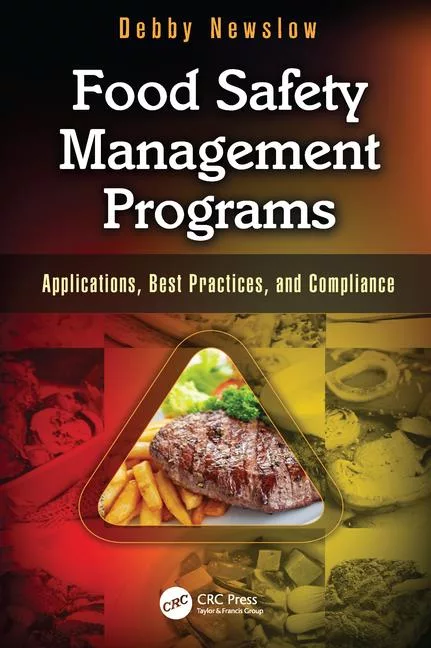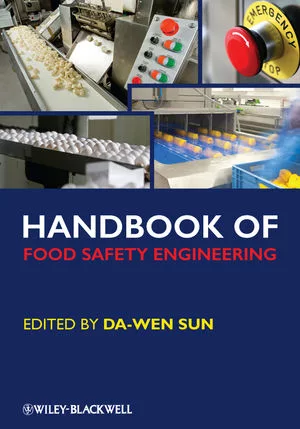Shedding Light on Food Safety: Applications of Pulsed Light Processing

Food safety is one of the most pressing public issues of our time. According to recent data from the U.S. Centers for Disease Control and Prevention and the U.S. Food and Drug Administration (FDA), morbidity and mortality rates resulting from exposure to improperly processed and/or handled food in the U.S. have declined over the last decade. These improvements correspond to industry’s implementation of preventive controls (Hazard Analysis and Critical Control Points) in the manufacturing, distribution and holding of foods and food ingredients. Technology and innovation have also contributed to this apparent reduction in the burden on the public health system. Notably, high-pressure processing (> 600 MPa) is widely used by the meat processing industry to control or reduce potential risks of postprocessing and postpackaging microbial contamination. Several other technological innovations also show promise as useful countermeasures against microbes in the food safety wars. Atmospheric cold plasmas, high-intensity pulsed electric fields (PEFs), high-powered ultrasound and high-intensity pulsed light[1] have demonstrated potential for use in food safety and food hygiene control applications.
Over the past 20 years, a number of researchers have investigated pulsed light as a means for decontaminating food and food contact surfaces, non-opaque liquids and packaging materials.
What Exactly Is Pulsed Light?
“Pulsed light” refers to broad-spectrum radiation (Figure 1) delivered as intense, intermittent, short-duration pulses. A typical pulsed light lamp produces polychromatic radiation in the wavelength range of 100 to 1,100 nm, although the wavelength range can vary based on the lamp source. Pulsed light is also referred to as high-intensity light, broad-spectrum white light, intense pulsed light, pulsed white light and pulsed UV light. In general, the majority of energy from pulsed light comes from the UV portion of the spectrum.
Pulsed light is effective for sterilization of surfaces and highly transparent liquids, such as water, and has been successfully used to inactivate bacteria, mold, spores and viruses in various food materials. This technology had been successfully used to inactivate myriad microorganisms in various foods. FDA approved the use of pulsed light for treatment of food in 2002.
Pulsed light is considered a nonthermal technology, even though there is a significant increase in temperature, because this increase is a byproduct of treatment.
Pulsed light is also an effective alternative to the chemical sterilants frequently used for treating food packaging materials, as it does not produce chemical residues. For example, consider a food product that is incompatible with hydrogen peroxide (H2O2) because of its propensity to develop rancidity as a result of contact with residues remaining on packaging materials treated with H2O2. In this particular scenario, pulsed light serves as a viable method for decontamination of packaging.
Several excellent review articles cover the technology in great detail.[2–5] In this article, we will provide a brief, general overview and an update on pulsed light’s use and application as a food safety intervention.
Food Safety Effects of Pulsed Light
When a food material is exposed to pulsed light, the energy can be absorbed, reflected or transmitted (Figure 2). The intensity of pulsed light exponentially decays within the food matrix.

When light, with an initial intensity of Io, penetrates the food, its intensity decays along a distance x beneath the food surface. The actual intensity (I) available at any point within the food, which is located at a distance x from the food surface, can be given by the Beer-Lambert law,
I = TIoe-x (equation 1),
where T is the transparency coefficient of the food material. The characteristics of the food, especially optical properties, determine the percentage of actual energy absorbed by the food.
In solid foods, pulsed light energy is absorbed in a thin domain near the food surface, limiting the penetration depth to a millimeter or more. However, much deeper penetration can be achieved in liquid food, depending on its opacity and flow characteristics. Moreover, impurities or large particles contained within foods can reflect and scatter light energy, thereby minimizing the amount of energy available for microbial inactivation. In addition, microorganisms can hide under these particles and not be exposed to pulsed light.
The total amount of energy absorbed by the treated substrate is responsible for the chemical and physical reactions induced by exposure to pulsed light. The energy absorbed by the microorganisms in the substrate is responsible for the lethal effects of the pulsed light. As only the energy absorbed will be used to produce the desired changes, such as microbial inactivation, it is crucial to measure the actual energy available at each location in the food product. Radiometers can be used to measure the delivered energy, although several technical hurdles need to be overcome.
Pulsed Light Generation
Pulsed light generation requires direct current (DC). Therefore, the alternating current is converted into DC by a rectifier. The electrical energy is then stored in a dense, high-energy electrical storage capacitor and later discharged in a flash lamp filled with inert gas, such as xenon (Figure 3). Due to the absorption of electrical energy, electrons in the xenon atoms are elevated to an excited state (a temporary, higher energy state). However, electrons prefer to be in ground state (the energy level electrons normally occupy), as it is the most stable and lowest energy state. Therefore, electrons release a discrete amount of energy as photons to return to the ground state. The wavelength spectrum of the released photons depends upon the elemental nature of the inert gas and the power supplied. In pulsed light systems with xenon gas, a broad-spectrum light ranging from UV to infrared (100 to 1,100 nm) is emitted. A typical output of a pulsed light lamp is shown in Figure 1.

Pulsed light is estmated to be at least 20,000 times more intense than sunlight. A typical lamp has a pulse rate of 1 to 20 Hz and a pulse width of 300 ns to 1 ms. Therefore, instantaneous power (energy/pulse width) of the light pulses is in the order of several megawatts, although the total power is comparable to continuous UV light (Figure 4).

Pulsed light treatment can induce photochemical, photothermal and/or photophysical damage to pathogenic microorganisms, leading to cell death,[6] as follows:
Photochemical damage: The UV light portion of the pulsed light damages the DNA of bacteria by forming thymine dimers. Upon dimer formation, bacterial DNA cannot be unzipped for replication, and thus bacteria cannot reproduce.
Photothermal damage: Localized heating of bacteria is induced by pulsed light due to the difference in the heating/cooling rate and absorption characteristics of the bacteria and the surrounding matrix. Thus, the bacterial cell acts as a local vaporization center and may lead to membrane destruction and cell wall rupture. Thermal stress leads to rupture of microbial cells especially at higher flux densities (> 0.5 J/cm2).
Photophysical damage: Pulsed light is also expected to induce some physical disruption on microbial cellular structures due to the intermittent, high-intensity pulses. Researchers have observed cell wall damage, membrane rupture, cytoplasm damage, etc. in bacterial cells exposed to pulsed light, even when the temperature increase was negligible, suggesting that photophysical effects can play a vital role in microbial inactivation.
Pulsed light-treated microorganisms do not exhibit any changes in resistance and growth kinetics, even after 10 exposures. Uesugi et al.[7] treated Listeria monocytogenes, Listeria innocua and Escherichia coli up to 10 times with pulsed light (at either 1.1 or 10.1 J/cm2) and found no change in the resistance or growth kinetics. Recently, Kramer and Muranyi[8] suggested that microorganisms can revert to a viable but nonculturable state after pulsed light treatment. This phenomenon can be overcome by the incremental increase in the exposure or treatment time.
Applications of Pulsed Light
Pulsed light had been successfully used in myriad applications, including microbial decontamination (bacteria, yeasts, molds, spores and viruses) on food surfaces, food contact surfaces and packaging surfaces.
Bacterial inactivation: Pulsed light is proven to be effective against various vegetative microorganisms and spores present in a variety of food products. Early studies demonstrated that pulsed light provides up to four to six times more microbial inactivation than continuous UV light. However, some recent studies do suggest otherwise. Therefore, further studies are warranted. Pulsed light has also proven to be effective in inactivating microorganisms in various low-moisture foods, such as almonds and black pepper, where applications of traditional technologies are limited. For instance, a 30-second pulsed light treatment resulted in up to a 4-log CFU/g reduction of Salmonella spp. on the surfaces of almonds.[9]
Thus far, pulsed light has been utilized for effective inactivation of various pathogens, such as L. monocytogenes,
E. coli, Salmonella Enteritidis, Pseudomonas aeruginosa, Bacillus cereus, Staphylococcus aureus, Bacillus subtilis spores, Aspergillus niger spores and L. monocytogenes Scott A present in food products like milk, honey, alfalfa seeds, cornmeal, liquid egg white, fruit juices, salmon fillets and model food systems, such as phosphate buffer, water agar surfaces and stainless steel plates. The effectiveness of microbial inactivation varies, based on the optical properties of food, the growth stage of microorganisms, the resistance of the microorganisms and the amount of energy supplied to the microbial culture. For a simple food matrix, significant inactivation of target microorganisms can be achieved within a few seconds.
Inactivation of spores: Spores may exhibit more resistance to pulsed light due to a thick protein coat. Unlike vegetative cells, spores produce minimal or no thymine dimers and predominantly produce spore photo-products (5-thyminyl-5,6 dihydrothymine adducts). In general, pulsed light is effective in inactivating various spores.
Inactivation of yeasts: Limited studies indicate that pulsed light can be successfully used for the inactivation of yeasts from buffer, agar surfaces, food or food contact surfaces. A 3- to 7-log reduction of various yeasts (Saccharomyces cerevisiae, Candida lambica and Rhodotorula mucilaginosa) was observed in buffer or on agar surfaces.
Inactivation of viruses: Pulsed light was also effective in inactivating viruses (>4.8- to 7.2-log PFU) in saline solution.[10] However, the reduction decreased significantly in the presence of protein, suggesting that the efficacy of the technology depends upon the composition of the food matrix. Jean et al.[11] observed complete inactivation (5-log reduction) of murine norovirus (MNV-1) and hepatitis A virus within a 2-second treatment on 1-cm2 stainless steel and polyvinyl chloride disks. However, in the presence of fetal bovine serum, a 2-second treatment resulted in only a 3-log reduction. In other studies, pulsed light was effective (up to a 5-log reduction) in reducing MNV-1 on gloves (poly gloves, nitrile gloves and vinyl gloves), lettuce and knives in less than 30 seconds.
Decontamination of surfaces and packaging materials: Pulsed light is an effective tool for surface decontamination of packaging materials and food contact surfaces. Currently, pulsed light is used for decontamination of bottle caps on industrial scale. Recently, Haughton et al.[12] studied the efficacy of pulsed light for inactivation of microorganisms on packaging surfaces. A 5-second pulsed light treatment of packaging materials and food contact surfaces resulted in 3.56-, 4.69- and 4.60-log10 CFU/cm2 reductions in the populations of Campylobacter jejuni, E. coli and Salmonella Enteritidis, respectively. Pulsed light can also be used for in-package pasteurization of foods provided that the packaging has high transmissivity to pulsed light.
Scale-Up and Other Considerations
Although pulsed light is not widely used in the food industry, it has been successfully used in large-scale commercial applications for DVD/CD/Blu-Ray bonding and bottle cap decontamination. A commercial-scale food packaging decontamination system based on pulsed light was commissioned by FDA in 1995. Therefore, these advanced, large-scale commercial systems can be easily adapted to the food industry. Pulsed light technology can also easily be integrated into existing food processing lines, making it an ideal technology.
Conclusions and Future Trends
As the food safety wars rage, world populations surge and the global demand for safe food and water disproportionately increases, there is a corresponding incremental demand for the use of innovative technologies functioning to guard against the proliferation of foodborne pathogens. Pulsed light has the potential to effectively inactivate microorganisms in a cost-effective manner and can effectively inactivate both vegetative cells and spores. Pulsed light produces minimal or no changes in the quality of treated food compared with conventional processes. However, these quality changes depend upon the type of food product and energy absorbed.
The National Advisory Committee on Microbiological Criteria for Foods suggested the following future research needs for pulsed light:[13]
1. Data on pulsed light’s effectiveness for specific commodities
2. Comparison of resistance of specific pathogens, including bacteria, viruses and parasites exposed to pulsed light
3. Identification of critical process factors and their effect on microbial activation
4. Optimization of critical process factors and development of protocols to monitor critical factors
5. Suitability of the technology for solid foods and nonclear liquids
6. Differences between pulsed light technology and UV (2,554 nm) light treatment, especially with respect to mechanism of inactivation
In conclusion, pulsed light has proven to be effective against various pathogens and spores in different food products. Currently, applications of pulsed light are limited to non-opaque liquid foods and/or surface decontamination of solid foods and food packaging materials. Further improvements in equipment design and technology can broaden its application to other foods. It is easy to envisage its use in food hygiene applications for decontaminating zone 1 and zone 2 food contact surfaces of processing equipment.


References
1. Larsen Bricher, J. and L. Keener. 2007. Promising food safety technologies. Food Safety Magazine 13(2):34–41, 58–60.
2. Palmieri, L. and D. Cacace. 2005. High intensity pulsed light technology. In Sun, D. (ed.), Emerging technologies for food processing. New York: Academic Press, 279–306.
3. Elmnasser, N. et al. 2007. Pulsed-light system as a novel food decontamination technology: A review. Canadian J Microbiol 53:813–821.
4. Gomez-Lopez, V.M. et al. 2007. Pulsed light for food decontamination: A review. Trends Food Sci Technol 18:464–473.
5. Oms-Oliu, G. et al. 2010. Pulsed light treatments for food preservation: A review. Food Bioprocess Technol 3:13–23.
6. Krishnamurthy, K. et al. 2010. Microscopic and spectroscopic evaluation of inactivation of Staphylococcus aureus by pulsed UV light and infrared heating. Food Bioprocess Technol 3(1):93–104.
7. Uesugi, A.R. et al. 2013. Effect of pulsed light treatments on the growth and resistance behavior of Listeria monocytogenes 10403S, Listeria innocua and Escherichia coli ATCC 25922 in a liquid substrate. J Food Prot 76(3):435–439.
8. Kramer, B. and P. Muranyi. 2014. Effect of pulsed light on structural and physiological properties of Listeria innocua and Escherichia coli. J Appl Microbiol 116(3):596–611.
9. Chen, X. et al. 2013. Pulsed light inactivation of Salmonella spp. on black peppercorns. Poster # 302-25. IFT Annual Meeting and Food Expo, Chicago, July 13–16.
10. Roberts, P. and A. Hope. 2003. Virus inactivation by high intensity broad spectrum pulsed light. J Virol Methods 110(1):61–65.
11. Jean, J. et al. 2011. Inactivation of hepatitis A virus and norovirus surrogate in suspension and on food-contact surfaces using pulsed UV light (pulsed light inactivation of food-borne viruses). Food Microbiol 28(3):568–572.
12. Haughton, P.N. et al. 2011. Efficacy of high-intensity pulsed light for the microbiological decontamination of chicken, associated packaging, and contact surfaces. Foodborne Pathol Dis 8(1):109–117.
13. National Advisory Committee on Microbiological Criteria for Foods. 2006. Requisite scientific parameters for establishing the equivalence of alternative methods of pasteurization. J Food Prot Suppl 69:1190–1216.
Looking for quick answers on food safety topics?
Try Ask FSM, our new smart AI search tool.
Ask FSM →








